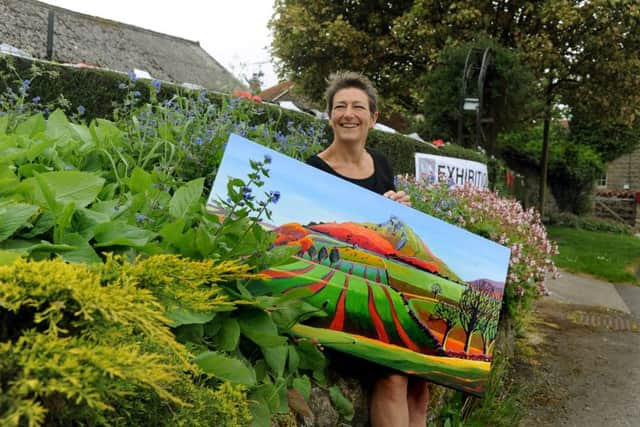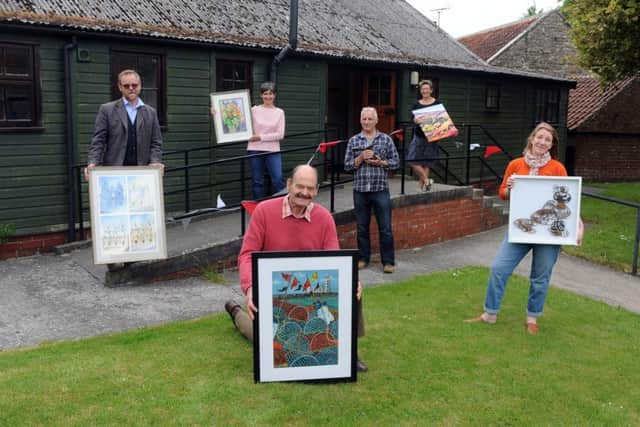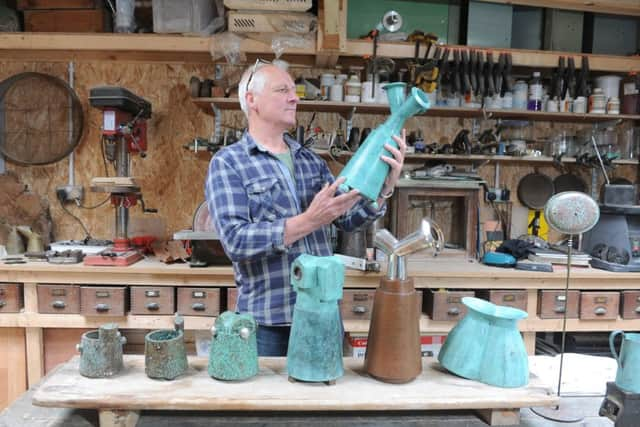Lockton '“ Tiny moors village where more than one in 20 is a professional artist
Only around 200 people live in the village of Lockton, a mile from the nearest pub and still connected to the outside world by steam train. But no fewer than 12 of them are professional artists.
This week it has become the location of the region’s newest arts festival, an event whose clientele in the first three days alone has been twice as big as the resident population and has come from as far afield as San Francisco, South Africa and Australia.
Advertisement
Hide AdAdvertisement
Hide AdTables at the Lockton Tea Rooms, the village’s sole retail outlet, have been harder to get than tickets to Hamilton.


“Some of the visitors have stayed over in the local B&Bs, so we’re bringing in business to the holiday economy and the village trades people,” said Chris Ware, a former BBC reporter turned landscape artist, who is one of the organisers of Lockton Artists Open Studios.
He and his colleagues stripped out the village hall and installed professional stands and lighting for the week-long event, which also takes in tours of the studios and workshops dotted around the 400-yard village centre.
He said: “It happened by accident. There are 200 people in the village and it turned out 12 of us earned some or all of our living from art. So we thought we should work together.”
Advertisement
Hide AdAdvertisement
Hide AdLockton, which lies on the southern edge of the North York Moors National Park, is a popular spot with holidaymakers exploring the nearby Dalby Forest.


But Mr Ware said: “It also suits artists. It’s on the moors so there’s plenty of light, and it’s only just north of Pickering, so you can be somewhere really peaceful yet not miles from anywhere.
“Despite the popular image, artists work really hard. We’re out travelling quite a lot so things like that matter.”
Lockton’s art community has used technology old and new to attract buyers and viewers, placing publicity on the internet and at the railway station at Levisham, a mile and a half over the moors, where the steam trains of the North Yorkshire Moors Railway ply the line and whose former stationmaster’s house is Mr Ware’s home and permanent studio.
Advertisement
Hide AdAdvertisement
Hide AdThe artists staged a trial mini-festival last year and use the tea room as a gallery all year round.


“It’s such a small village that if you see a picture you like, the lady in the tea room will ring up the artist and you can go to their house,” Mr Ware said.
“All the artists are committed to it – more so than if we had tried to create something like this artificially.
“I’m a watercolourist and we’ve got oil painters, an artistic blacksmith and an artist who makes metal sculptures and devices.”
Advertisement
Hide AdAdvertisement
Hide AdArtists say they can judge the economic climate by how much work they can sell.
We are the canaries of the economy,” said Mr Ware. “We know what’s happening by whether people are buying pictures or not. “There was a peak last summer but it was still only about a third what we used to be doing. Until Brexit settles, people are going to be hanging on to their money – so it’s important for events like this to keep our profile up.”
The festival runs until Sunday, with plans in hand to repeat it every one or two years.